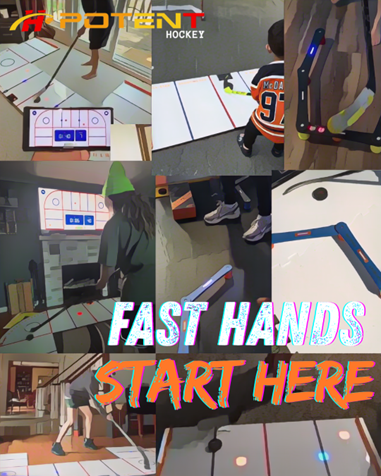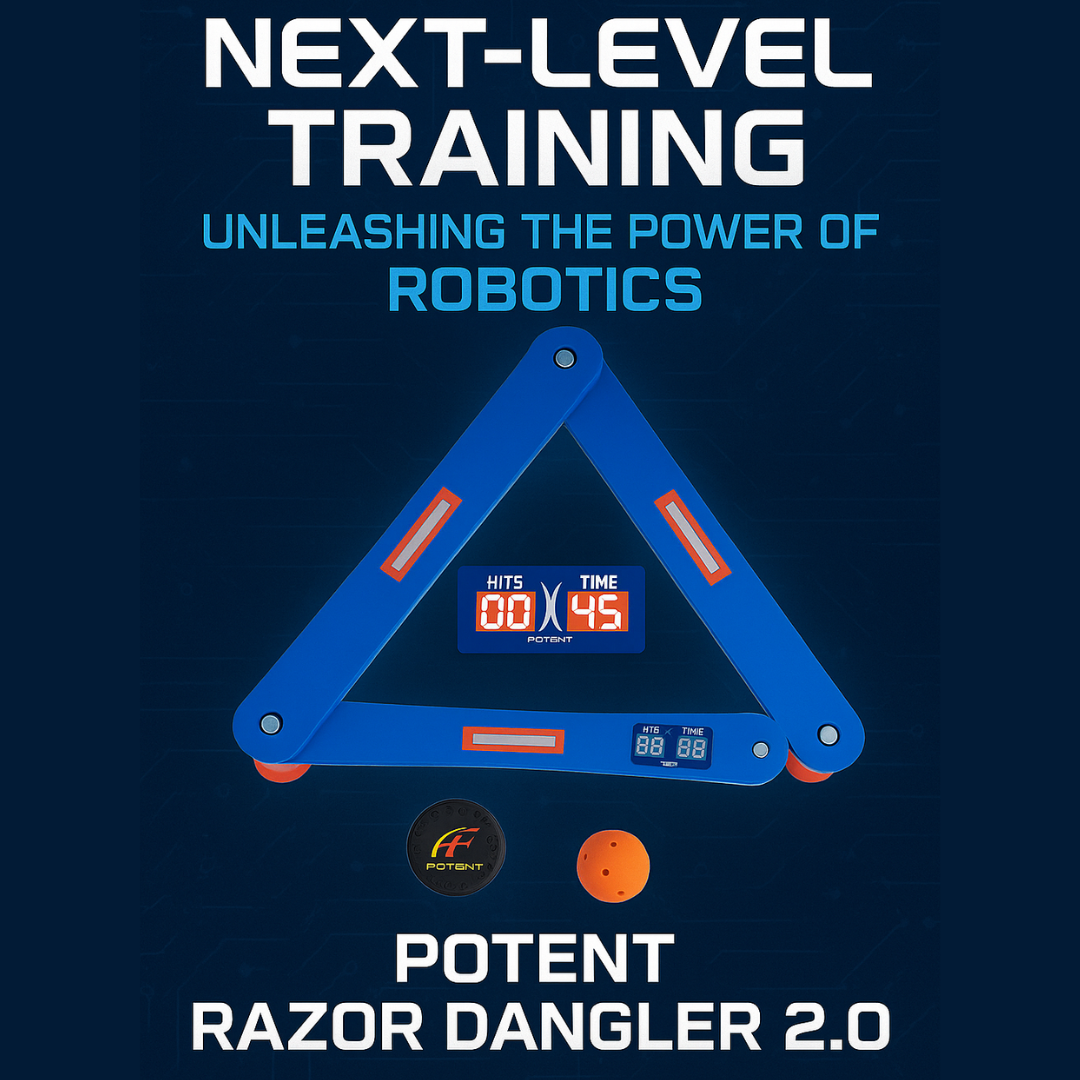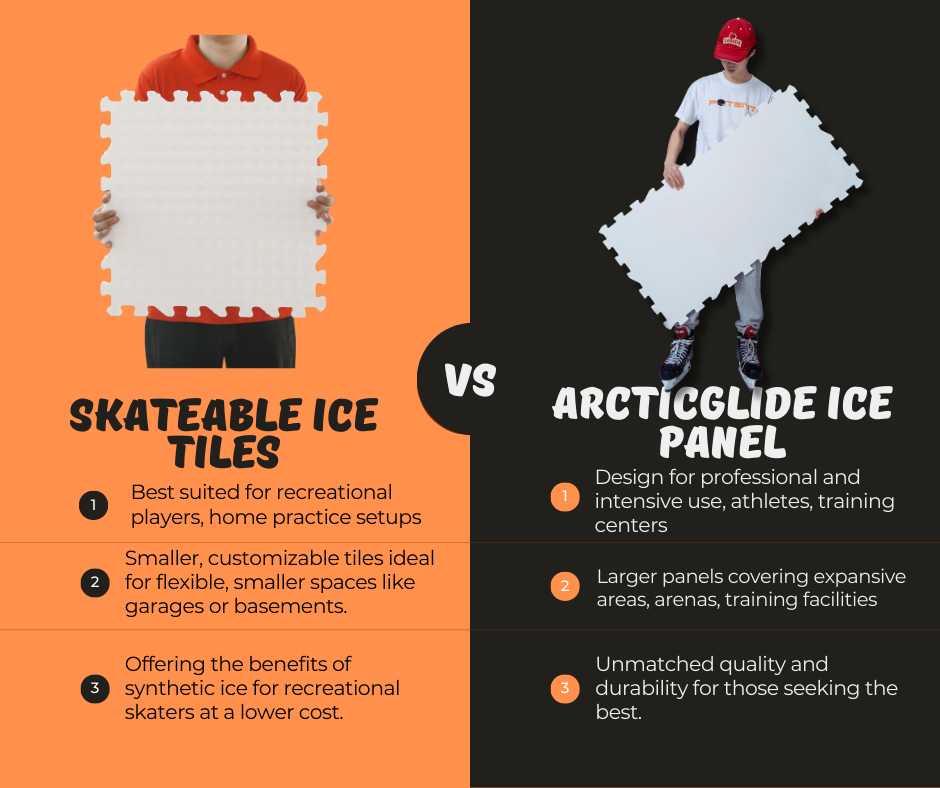Maximize Your Quick Release: How to Use a Hockey Shooting Pad to Improve Shot Speed

Whether you’re an aspiring forward trying to hit top corners from the slot or a defenseman looking to master the one-timer from the blue line, shot speed and release time can make or break your game. Every millisecond matters when the puck leaves your stick — and the difference between scoring and missing often comes down to how well you train off the ice. That’s where a hockey shooting pad becomes your secret weapon.
In this guide, we’ll explore how to use a hockey shooting pad (or synthetic ice panels) to enhance your quick release, improve shot velocity, and build consistent shooting mechanics — even when you’re far from the rink.
Why Quick Release Matters More Than Ever
In today’s fast-paced game, the “perfect wind-up” is nearly extinct. Modern hockey demands speed, deception, and adaptability. Players like Auston Matthews, Connor Bedard, and David Pastrňák have redefined shooting with their ability to release the puck deceptively fast from any body position.
The truth? Goalies are quicker and more analytical than ever. Video scouting, improved equipment, and defensive systems mean shooters must rely on surprise and quick execution to beat them. A fraction of a second delay gives the goalie all the time they need to square up.
A strong quick release allows you to:
- Capitalize on rebounds and loose pucks faster.
- Shoot in stride without sacrificing balance or power.
- Hide your shot from defenders and goalies.
- Get more pucks on net, especially under pressure.
But developing that kind of release requires repetition — and unless you have daily ice time, you’ll need an alternative. That’s where a hockey shooting pad bridges the gap between practice and performance.
The Science Behind the Hockey Shooting Pad
A hockey shooting pad is designed to mimic the slick, low-friction surface of real ice. Unlike rough concrete or tile flooring, it allows the puck to glide naturally, giving you realistic feedback as you train.
The main purpose of a shooting pad is to:
- Protect your stick blade from wear.
- Provide smooth puck movement.
- Allow repetition of real-game shooting motions.
- Simulate on-ice feel at home or in the gym.
High-quality options — such as ArcticGlide Skating Synthetic Ice Panels — go a step further. They’re skate-able, meaning you can actually combine shooting drills with on-ice movement patterns. The ultra-smooth polymer surface is engineered to offer just enough resistance to replicate ice friction, giving your muscles realistic memory for game-day shooting.
How to Train for a Faster, Cleaner Release
To truly benefit from your hockey shooting pad, your training must combine technique, repetition, and resistance control. Below are key drills and strategies to elevate your shot.
1. Quick-Release Wrist Shots (The Foundation)
Goal: Improve muscle coordination between your wrists, forearms, and core for a faster, cleaner shot.
How to Do It:
- Set up a target about 10–15 feet away.
- Use 10–15 pucks at once for rhythm training.
- Keep your knees slightly bent, hands in front, and shoot in rapid succession — no pauses between shots.
- Focus on quick puck transfer: catch, cradle, shoot.
Pro Tip: Work on shooting from different blade positions — forehand toe, mid-blade, and heel — to simulate unpredictable game angles.
2. The “One-Motion” Drill
Goal: Eliminate extra stick movement between puck reception and release.
How to Do It:
- Set a passer (such as the Pro Passer) in front of your hockey shooting pad.
- Receive the puck and shoot in one continuous motion — no cradle or pause.
- Repeat from multiple angles to mimic in-game puck reception scenarios.
This builds the muscle memory for catching and releasing under pressure — something every elite scorer needs.
3. Shooting in Motion (Stride & Release)
Goal: Combine lower-body balance with upper-body release mechanics.
If your shooting pad allows for limited skating or sliding (like ArcticGlide panels), work on shooting in stride. Push off one leg, glide, and shoot mid-stride. Focus on maintaining posture, keeping your chest square, and snapping your wrists at the moment of release.
This is how players like McDavid and Kucherov generate power without setting up.
4. Power Load Drill (Weight Transfer Focus)
Goal: Generate more shot velocity by synchronizing leg drive and stick flex.
How to Do It:
- Position your front foot slightly forward on the shooting pad.
- Start the puck behind your back skate.
- Load your stick by pressing into the ice/surface.
- As you transfer your weight forward, unleash the puck with a full wrist snap.
This drill improves your kinetic chain — from legs to core to stick blade — translating to higher shot speeds measured by a radar gun.
Analyzing and Tracking Your Progress
One of the most underused training habits among players is data tracking. A hockey shooting pad allows you to perform high-repetition sessions consistently — but you’ll see the best improvement if you record your progress.
Use tools like:
- Radar guns to measure shot velocity.
- Phone slow-motion videos to analyze mechanics.
- Training apps to log daily or weekly sessions.
Setting measurable goals keeps training purposeful. For example:
- Week 1–2: Average shot speed = 65 mph
- Week 4: Average = 72 mph
- Goal: Reach consistent 80 mph wrist shot by Week 8
The Importance of Consistency and Recovery
Improving your shot is not just about going harder — it’s about going smarter. Here’s what separates elite players from the rest:
- Short, frequent sessions: 20–30 minutes a day beats a single long weekend session.
- Warm up your wrists and shoulders: Prevent strain and improve control.
- Rest and recovery: Overtraining can reduce shot velocity due to muscle fatigue.
A hockey shooting pad at home allows you to practice daily without needing rink time. The accessibility means you can get hundreds of extra reps per week — a massive edge over competitors who only train on ice.
How the ArcticGlide Shooting Surface Changes the Game
Traditional shooting pads are great for stickhandling and static shots — but they often fall short for advanced drills. The ArcticGlide Skating Synthetic Ice Panels from Potent Hockey takes things further.
Here’s why:
- Dual-function surface: Use it as a shooting pad or skate-able synthetic ice.
- Modular design: Expand your training area by connecting multiple panels.
- Professional-grade glide: Mimics real ice, ideal for stickhandling and stride drills.
- Durability: Designed for long-term use, even under heavy puck impacts.
For players serious about long-term development, this kind of training surface bridges the gap between dryland and on-ice performance. It brings the feel of a rink into your garage, basement, or driveway — all year long.
Advanced Shooting Variations to Try
Once you’ve mastered the fundamentals, push yourself with these elite-level challenges:
- One-Timer Drill: Combine a rebounder with a shooting pad to simulate pass-and-shoot dynamics.
- Toe Drag & Release: Work on deception by pulling the puck in and snapping the release quickly.
- Off-Balance Shots: Shoot from one leg or after a pivot to mimic game conditions.
- Target Training: Aim for different zones (low blocker, glove high, five-hole) using shooting tarps or visual targets. Make it engaging with the Digital Shooting Tutor.
Each of these reinforces control and precision — the real hallmarks of a sniper.
Final Thoughts: The Home-Ice Advantage
Hockey is evolving faster than ever, and the players who adapt — who find creative ways to train off the ice — are the ones who rise above. A hockey shooting pad isn’t just a piece of plastic; it’s a gateway to mastering your release, refining your form, and staying game-ready 365 days a year.
The key is repetition, analysis, and progression. Every puck you shoot on that pad builds not just your shot — but your confidence, your rhythm, and your edge.
If you’re serious about getting better, investing in a pro-grade surface like the ArcticGlide Synthetic Ice Panel Pro from PotentHockey.com could be one of the smartest training decisions you’ll ever make.




